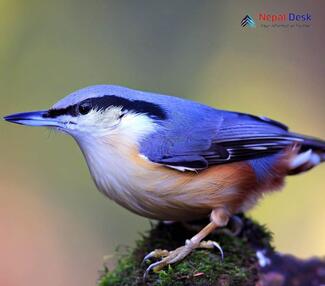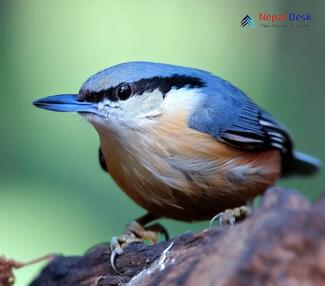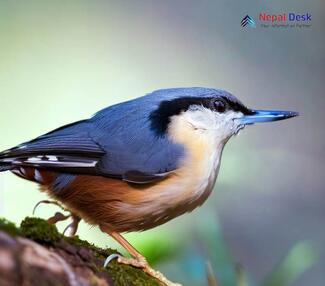Nepal boasts incredible landscapes and a diverse array of habitats for birds to thrive. Birdwatchers take delight in observing numerous bird species, including the intriguing White-tailed Nuthatch (Sitta himalayensis), native to this region. In this article, we'll explore what sets this bird apart, its natural habitat in Nepal, and some entertaining facts about it.
Appearance and Behavior of the Bird
The White-tailed Nuthatch is a petite bird that can be challenging to spot. It possesses unique markings that distinguish it from other birds. Measuring approximately 12 centimeters in length, the bird flaunts a white tail, a gray-blue top, and a light orange underside. Additionally, a black stripe runs across its eye region.
The nuthatch's impressive climbing ability is one of its standout features. Armed with robust legs and sharp claws, it scurries up and down tree trunks searching for insects concealed within crevices. Observing the bird descending headfirst is truly captivating!
The Natural Habitat of the Bird in Nepal
In Nepal, the White-tailed Nuthatch resides in forests situated between 1,500 and 3,500 meters above sea level. It particularly favors oak forests or mixed woodlands featuring pine, cedar, or fir trees.
The White-tailed Nuthatch can be found across Nepal, stretching from Annapurna in the center to Kanchenjunga on the eastern border. Notable locations for sightings include Shivapuri Nagarjun National Park and Langtang National Park.
Vocalizations and Reproduction
The White-tailed Nuthatch produces distinctive melodic calls consisting of simple metallic notes often repeated for brief periods. These beautiful songs help them communicate and attract mates during the breeding season.
Mating occurs between March and early May for the White-tailed Nuthatches. They construct their nests in tree cavities or abandoned woodpecker holes, lining them with soft materials such as moss or lichen. The female lays four to six eggs and incubates them for approximately two weeks before they hatch.
Intriguing Facts
One fascinating aspect of the White-tailed Nuthatch is its feeding technique. Descending head-first down tree trunks, they use their powerful beaks to probe into crevices and bark in search of insects, nuts, and seeds. This unique foraging method enables them to access food that other birds might overlook.
Another intriguing fact is their utilization of sticky tree sap. White-tailed Nuthatches have been observed applying sap around the entrance of their nest holes, possibly as a deterrent against predators. The viscous substance may impede any unwanted nest intrusions.
Conserving the Bird in Nepal
Currently, the International Union for Conservation of Nature (IUCN) does not classify the White-tailed Nuthatch as endangered. However, deforestation and climate change could pose threats to the species in the future.
It's vital to continue conservation efforts for this remarkable bird in Nepal. Preserving their habitats and promoting responsible behavior among visitors to natural areas are essential steps. By doing so, we can protect Nepal's stunning biodiversity and ensure future generations can appreciate the extraordinary White-tailed Nuthatch.




